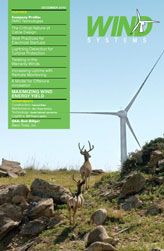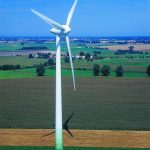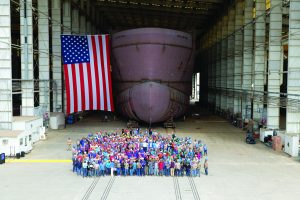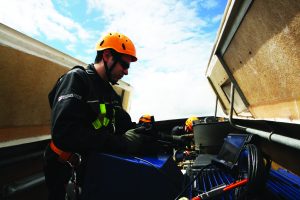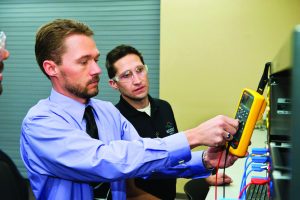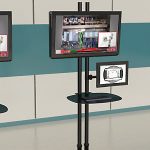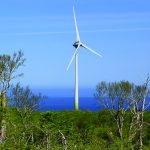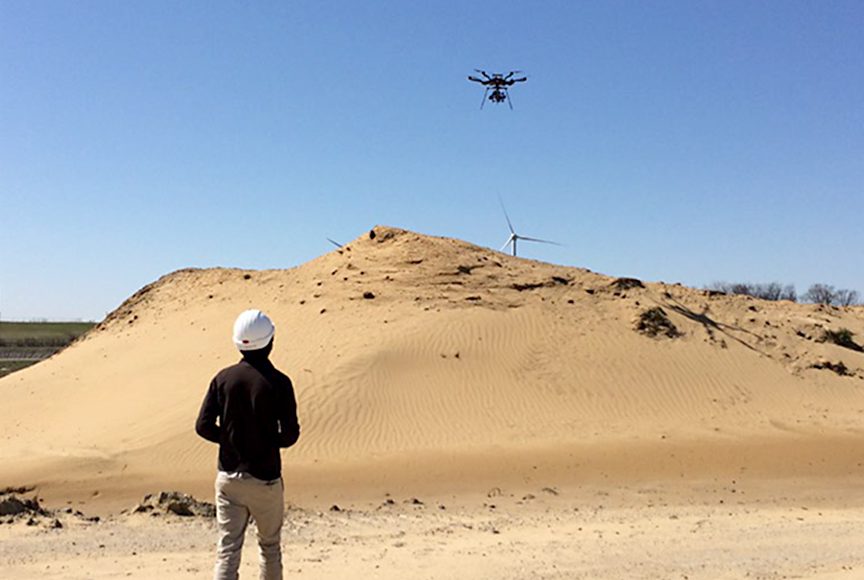Industry data shows that the demand for wind-generated power in the United States is growing, driven by a Department of Energy goal to increase domestic electricity production from wind power by 20 percent over the next 20 years.
After China, the U.S. is the second-fastest growing wind market, and despite the recession it continued to expand in 2009. According to the American Wind Energy Association (AWEA), although Germany is the world leader in terms of installed wind power with over 22,000 MW, it has only a fraction of the wind energy potential of North Dakota. AWEA reports that the top states for wind energy potential—as measured by annual energy potential in the billions of kWhs and factoring in environmental and land use exclusions for wind class of 3 and higher—are: North Dakota (1,210); Texas (1,190); Kansas (1,070); South Dakota (1,030); and Montana (1,020). Nebraska, Wyoming, Oklahoma, Minnesota, and Iowa round out the top 10.
As the U.S. wind power market prepares for increased production, it is also the time for developers to adjust to evolving market requirements. Meeting even a fraction of the potential wind power goals will not only require increased turbine volume production, but also a deep pool of transportation and logistics equipment, and the expertise to match.
In particular, there are a number of hurdles to consider as you coordinate delivery of those components to wind farm installations in the United States. Regardless of whether rail or barges are used, at some point trucks are going to become a key factor.
While equipment shortages for 2010 have not occurred at the levels predicted earlier this year, it is just a postponement of the inevitable. The recession dampened project investment and increased postponements. Now wind farm projects are coming back. Thanks to demand, trucking companies are looking at large increases in project opportunities; perhaps as much as double or triple pre-recession volume. But the numbers of trucks and experienced drivers required are not available. Many trucking companies, especially smaller firms, were unable to weather the recession—over 4,000 went out of business, in fact—and larger companies needed fewer drivers. A number of those drivers looked for alternative employment, resulting in a smaller pool, which is now creating a shortage. Plus, compliance with the new Comprehensive Safety Analysis 2010 will undoubtedly force a number of trucks and even more drivers off the roads. Less capacity usually means higher freight rates.
One of the major challenges for the intermodal transportation of larger wind equipment components is the wind itself. Components are bigger, heavier, and therefore more challenging for the truck industry. Wind pressure on heavy loads requires experienced drivers who are specially trained to transport wind power components. As the average age of truck drivers increases, younger recruits must be found to fill the gap. Will they have sufficient experience?
Equipment supply is also outstripping demand. Trucking companies that survived the recession and want to buy trailers to meet the increasing demand often cannot because many trucks and trailers that were used in transporting wind equipment are not available since they are still tied up in bankruptcy proceedings. Access to equipment that fits your specific needs is important. The right trailers, especially for blades, must be available. Some companies have designed self-load and self-unload trailers that help cut costs associated with crane rentals.
Then there is the whole logistics process required for road transportation. “Uncomplicating” a complicated process of moving oversize heavy wind components is another challenge. Two of the primary issues that came out of a recent survey by AWEA’s Transportation & Logistics Working Group for road transportation of wind components were planning and permits.
There is no substitute for detailed advance planning as early in the transportation development process as possible. This is especially important when you consider the range of issues to manage: route and access surveys; coordination with other transportation modes; ancillary equipment; traffic conditions; height and weight limits; permits; and constant communications with local government staff, not to mention weather. Planning also means working around physical obstacles such as access roads to be constructed and bridges to be built, etc. Each state often has its own regulations that govern weight, maximum load, and superload permits. It is important to know the details of every state’s requirements at the outset of your transportation plans. Last but by no means least, as with any successful project picking the right partner resources is not only critical but probably the most important decision of all.
















